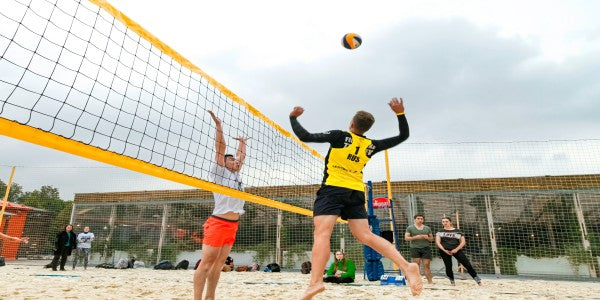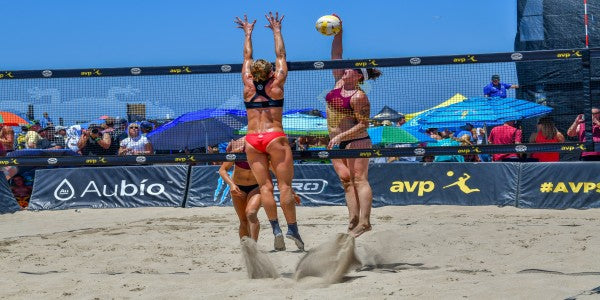Baseball for Beginners | Understand the Fun of the Game
Baseball is one of the most popular sports in the United States with Major League Baseball as the top professional baseball league in the world, also having a team in Canada. The sport has become increasingly popular in Southeast Asia with extremely competitive professional leagues in Japan and Korea that have produced Major League Baseball players.. A large contingency of Major League Players hail from the Caribbean, and professional games are played each year in England. What are the basics of baseball? What strategies are needed to maximize chances to win a baseball game? What tools and technology are used? Let’s look at all these questions and more in the following article.
General Information of Baseball
Baseball is played with nine players on a field along with several umpires, from four to six per Major League game depending on whether the game is regular season or the playoffs. The playing field is broken down into three sections. The infield contains a combination of grass and dirt with the four bases and the pitching mound. The outfield is the large, grassy area beyond the infield between foul lines and the fence. The foul territory is the area outside the foul lines.
A baseball game in the college and professional leagues is nine innings consisting of three outs per inning per team. The idea is to score as many runs as possible during each inning for the team batting and to prevent runs from scoring for the team in the field. The team with the most runs after nine innings wins. If there is a tie, extra innings will be played to decide the outcome. There are no ties in baseball.
A baseball game is a battle between the pitcher and the batter. The pitcher stands 60 feet, 6 inches from the batter on a pitching mound, and attempts to pitch the ball in a way to minimize solid contact with the bat to get three outs per inning before runs score. The catcher receives the pitch and his job is important in calling the type of pitch and where to throw the pitch.
The goal of each batter is to hit the ball in fair territory so the defenders cannot get them out. If a baserunner touches home plate without being called out after also touching all three bases safely scores a run for his team. A ball hit over the outfield fence in fair territory is a home run and the batter successfully runs around all the bases and scores as well as anyone else already on base.
Baseball Fielding Team
There are nine positions on the field. The pitcher and catcher make up the “battery” and across the infield from right to left are the first and second baseman, and on the left side of the infield is the shortstop between second and third base and the third baseman. Generally, the most difficult infield positions to defend are third base and shortstop, while the first baseman fields the least number of balls and is considered the easiest to defend.
While the pitcher’s main role is to pitch the ball to get the better out, he must also be able to field ground balls and bunts and backup bases. The catcher’s main objective is to call pitches but must also be adept the blocking wild pitches and throwing out baserunners attempting to steal.
The first baseman is mainly responsible for fielding ground balls in his area and catching throws from other infielders to get batters out on ground balls to the infield. On occasion balls thrown to first base land in the dirt first, so the first baseman must be adept and catching those balls on a bounce.
The middle infielders are the second baseman and shortstop. Both positions require players with quick feet and good glovework to cover a wide range in the field and field ground balls effectively. In addition, they must possess a good arm to quickly and accurately throw the ball to first base or to other bases to make outs.
The third baseman must have quick reflexes to knock down and catch hard ground balls and line drives off the bat of right-handed hitters. In addition, a strong arm is required to make the long throw across the diamond to first base.
In the outfield, there is the left fielder, the center fielder, and the right fielder. The center fielder should be the fastest runner and the best at catching the ball. He needs to cover the most ground. The right fielder typically has the strongest arm since he has the longest potential throw to third base. The left fielder has the shortest throws and often has the weakest throwing arm.
Baseball Defensive Strategies
Perhaps most of the strategy on the field in a baseball game is between the pitcher and the catcher. Multiple pitchers and hundreds of pitches are used throughout a nine-inning game. Most pitches throw a variety of pitches, including a fastball, a change-up, a curveball, a slider, a split-finger fastball, and some throw a knuckleball. Each pitch should be thrown from the same pitching motion with the finger position on the baseball determining the pace and movement of the pitch. This is all done in an attempt to deceive the hitter.
While most pitchers throw from an overhand or three-quarter delivery, some pitches throw sidearm or nearly underhanded delivery, which is typically difficult to hit due to the unusual arm angle. Changing pitches, speeds, locations, and delivery all keep a hitter off balance, making it more difficult to make solid contact with the bat.
The players on the field can move around to adjust for the batter at the plate. The number of runners on base, the overall game situation such as score and inning, and the tendencies of the batter, all play a role in the position of the defensive players.
Some infield strategies include playing back for a potential double play, playing in to try and force out a runner at home plate, moving players to where a ball is anticipated to be hit in the infield, and charging for a bunt.
Batting and Baserunning
During a baseball game, every batter comes to the plate in an attempt to hit the ball in fair territory where the defense can’t get him out. Not every pitch is a good one to swing at, so the batter must be able to make a quick decision to swing or not. If a pitch is not in the strike zone, as defined in the rule book, the pitch is called a ball. If a batter gets four balls before three strikes, he gets a walk. Three strikes is a strikeout. A batter can potentially reach first base on a strikeout if the catcher misses the third strike, but he needs to reach first base before the catcher throws the ball to the first baseman tagging the base.
Batters often prepare prior to a baseball game by reading the tendencies of the pitcher. They will look for little cues as to what pitch is coming and also know what kinds of pitches the pitcher throws in certain situations.
Being patient at the plate is key to successful hitting. One example is a batter not swinging when having no strikes on him unless the pitch is in a particular zone. With two strikes, a batter must try to foul off pitches that are strikes or nearly strikes to wait for a good pitch to hit. Great hand-eye coordination is the key to staying alive at the plate in these situations to avoid a strikeout.
For much of Major League Baseball history, the pitcher was required to bat, but the designated hitter rule came into play in 1973 in the American League. The National League adopted the rule in 2022 and now an extra bat, generally a power hitter, is in the lineup instead of a pitcher, who is typically a very poor hitter. The designated hitter adds more offense to the game.
While running the bases, it’s imperative to have quick and effective decision-making when going for the next base. Sometimes coaches will have a runner try to steal a base. In this case, the runner must be able to judge when the pitcher is going to throw the pitch. In a hit-and-run play, the batter will swing at nearly any pitch in order to try to advance the runner.
Traditionally the first hitters in the lineup are great contact hitters, but in today’s era of the game, teams are putting power hitters at the top in hopes of a home run to get on the scoreboard early. The best all-around batter on the team usually hits third, while the biggest power threat and run producer will bat fourth.
The weakest hitters typically hit at the bottom of the order, but sometimes very fast runners who can get on base will bat ninth. This is to get men on base to turn the table and get the better hitters at the top of the lineup a chance to drive in runs.
During a baseball game, teams can make substitutions during any dead ball. A batter entering the game in place of another batter is called a “pinch hitter” while a runner used to replace another baserunner is called a “pinch runner”. Teams can also bring in players to replace other players in the field, typically called a “defensive replacement” and a new pitcher coming into the game is a “relief pitcher”. Note that once a player leaves a professional game he is not allowed to reenter the game.
Note that during a baseball game, sometimes tags are needed to get runners out, this is when a runner is not forced to try to advance due to baserunners immediately behind him. Force plays require the fielder to simply touch the base with his foot while the ball is in his glove.
Use of Technology
Many types of new technology such as virtual reality, sophisticated baseball radar guns, and pitch tracking are keeping Major League Baseball current. eg:Baseball speed radar gun can store the last ten records of hits, pitches or swings. you can analyze your pitching, running, hitting, and fielding through your data, to improve your skill level.
The use of radar guns is not a new concept. They were first seen, many times from someone behind home plate in the stands, starting in the late 1970s and early 1980s. Advances in technology don’t require people in the stands, and now radar guns are used to measure pitch velocity from the pitcher's hand and also measure the speed of the ball off the bat, known as “exit velocity”.
Radar systems also help analyze each pitch made during a baseball game, which provides important information regarding spin rates and trajectory.
Technology has gone to the point of wearable technology to track a player’s heart rate, hydration, and sweat content all in an attempt to keep players in peak condition for top performance.
Data and analyzing data are at the forefront of today’s society, and baseball is no exception. Coaches and analysts are always looking for the latest and greatest statistics to evaluate players. Statistics are used to determine the strengths of weaknesses of players and the opposition.
Technology is not only used to enhance a team’s chances on the field, it is also used to get fans more engaged in the game. Virtual reality at Major League parks allows fans the experience of hitting off live Major League pitchers in a simulated baseball game.






